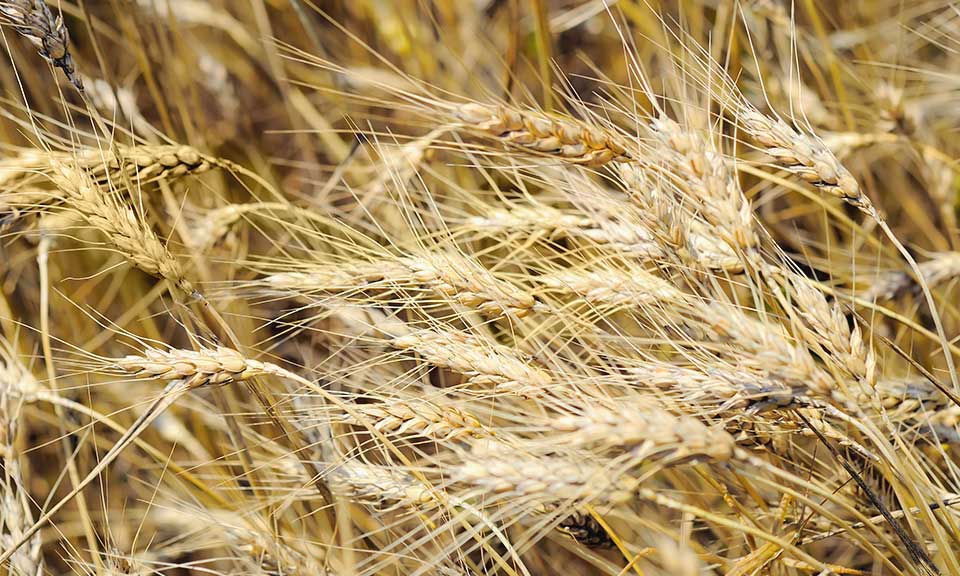Commodities 2023: Australia's record wheat crop to dominate Asia demand in H1

Australia is likely to start the new year with a record wheat crop harvest and dominate short-term Asian demand, while supplies from Argentina and Ukraine are uncertain. Logistical challenges and wheat quality concerns though may compromise Australian exports.
The continent is currently harvesting wheat and on track to receive its largest crop in history. The Australian Bureau of Agricultural and Resource Economics and Sciences estimated output at 36.6 million mt, 300,000 mt more than the previous 2021-22 season's (October-September) 36.3 million mt.
Yet the third straight La Nina that brought wet conditions and boosted 2022 yields are causing havoc for producers at harvest time. Losses in some acreages are expected due to flooding, farm equipment has sustained damages, and some roads washed away in flash floods.
Australia had a record crop in MY 2021-22 due to similar wet conditions but 2022 rains have been heavier. Western Australia's harvest is delayed by a month while in parts of New South Wales, where the worst floods were recorded, harvest may only be complete as late as March 2023, according to RaboResearch agricultural analyst Dennis Voznesenski.
There remain concerns over the Australian crop quality. The possibility of a decline in supply of high-protein milling wheat could put Asian buyers in a bind.
The segregation ratio between milling and feed wheat is expected to remain non-transparent until January 2023, assuming weather holds.
Market participants have hoped the intensity of showers will reduce, allowing crops to ripen and soils to dry so the acreage loss could be offset. Australia's Bureau of Meteorology has forecast lowering chances of above-average showers over December-February.
"We have more quality issues than in a normal year, but we have much better wheat and more of it than we feared when the rain started," CEO at IKON Commodities Ole Houe said.
Some early receivals on East Coast Australia have exhibited better-than-expected protein wheat. This would help provide options to Asian buyers looking for high-protein wheat, as the next available origin is Canada.
Indonesia is the world's largest wheat importer and traditionally Australia's top destination, except during drought years when buyers pivoted to Black Sea wheat. These flows restarted when the Black Sea Grain Initiative was signed in July but shipments have been sporadic. Ukraine's exports to Asia could pick up with the extension of the grains corridor till March 2023 but buyers remain cautious citing reliability of sellers, longer shipment periods, financing limits and execution risks as deterrents.
Black Sea suppliers including Ukraine, Bulgaria, Romania and Russia comprised about 20% of the Philippines' feed imports but volumes have also dried up since the war.
India, too, exported a significant quantity in MY 2021-22 due to a large surplus. However, future supplies look doubtful, with the country banning exports in May after extreme heat waves clipped output. Australia is looking to fill the gap, especially with a 7% tax advantage to the Philippines.
India could see a bumper wheat output in MY 2022-23 due to an increase in plantation. But the government is yet to lift the export ban with domestic prices rising sharply and supply remaining tight.
Domestic wheat prices have jumped 33% so far in 2022, way above the government-fixed cap of Rupees 21,250/mt ($257.57/mt).
A poor wheat output expected in Argentina in MY 2022-23 may also boost Australia's export sales.
For MY 2022-23, Argentina's wheat output is seen at 11.8 million mt, down from 23 million mt in MY 2021-22 due to a drop in area and yield amid dry conditions across key growing regions. Export estimates are down 38.7% on the year as a result.
Feed wheat prices may compete with corn for substitution with a higher output of feed quality wheat in Australia's crop.
Corn supplies for first-half 2023 may face tightness, leaving feed buyers to seek alternatives. Brazil's old-crop corn exports are expected to wind down as the market approaches Q1 2023, making way for soybean exports. Water levels on the US Mississippi River are at historical lows, supporting corn markets, while the lack of rainfall in Argentina has delayed corn planting plans.
With wheat restricted from these origins, Australia could be buyers' first stop for both milling-grade and feed-grade wheat for the first few months in 2023. However, importers may seek Canada or Black Sea supplies to meet milling wheat demand if the Australian crop sees further quality downgrades.
Pockets of swine fever outbreaks in Southeast Asia and diminishing purchasing power on weaker currencies have impacted Asian wheat demand in 2022.
In Indonesia, flour millers have observed lower growth in 2022 despite lower flour prices. Vietnam feed sales have been slow to recover post the pandemic, and most Asian feed buyers have switched to alternative local substitutes to lower input costs.
Global inflation remains a key factor that could put a drag on Asian demand while Australia reaps its largest-ever wheat crop in history.

News
Bayer AG has announced the pilot of an expert generative AI (GenAI) system that “quickly and accurately” answers questions related to agronomy, farm management and Bayer agricultural products. The pilot has been developed in collaboration with Microsoft as leading technology partner and Ernst & Young (EY) as an industry partner, the company said. The system is the result of Bayer using proprietary agronomic data to train a large language model (LLM) with years of internal data, insights from thousands of trials within its vast testing network and centuries of aggregated experience from Bayer agronomists around the world, the company said. “Our unique GenAI system has the potential to serve agronomists and benefit farmers all over the world, further advancing AI as an indispensable technology for agriculture,” said Amanda McClerren, CIO and head of digital transformation & information technology for Bayer’s crop science division. Bayer said it is exploring ways to integrate the expert GenAI system into its digital offerings, and the company anticipates broad opportunities for collaboration with other agricultural offerings and partners. “Bayer aims to expand the pilot of the expert GenAI system to selected agronomists and potentially farmers as early as this year, while continuing to advance a separate GenAI prototype allowing users to directly query their own farm data,” the company said. In addition, the partnership between Bayer and Microsoft enables the company to bring ready-made capabilities, AgPowered Services, to the agri-food industry, such as Bayer’s Historical Weather that brings a comprehensive weather dataset to Azure Data Manager for Agriculture that spans the last 40 years and provides detailed, field-level weather insights across global agricultural regions, the company said. Integrating tools from IBM, including from the IBM Environmental Intelligence Suite, the new capability, which was previously available for internal use only, can inform weather risk assessments and actuary processes, Bayer said. It will also be used by Bayer and others to forecast crop seasonality and production changes year over year, as well as train agronomic models, it said. Meanwhile, Bayer is developing a connector that enables access to irrigation data from Lindsay Corp., an industry-leading irrigation solution provider. This expands the data types available to Azure Data Manager's enterprise customers, making it possible for them to connect to irrigation data in the same way as weather, imagery, original equipment manufacturer (OEM) and other data types, the company said. The new cloud offerings will also support regulatory and sustainability reporting, such as providing supply chain traceability that can help ensure compliance with new laws such as the EU Deforestation Regulation, which is expected to go into effect at the end of 2024, Bayer said. This article was first published in chemweek.com. Photo credit: Bayer

News
Asia has seen the fastest growth in biofuels production and exports globally, driven by government policies and export markets for feedstocks. To capitalize on the boom, governments have rapidly pushed out biofuel mandates focused around their country’s main agricultural products. Presently, the largest biofuel producers in the region are China, India, Indonesia, Malaysia, the Philippines and Thailand. Here’s a ready reckoner for Asia’s major biofuel policies along with production, trade and prices. Click for the full-size infographic